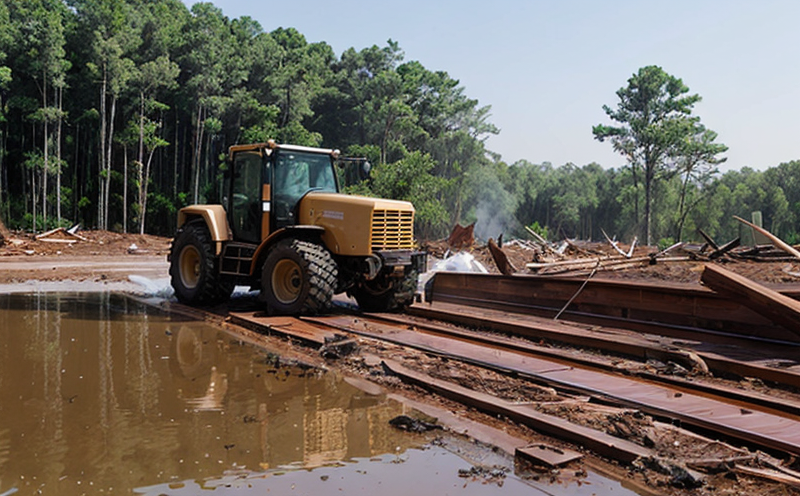EN 60068 2 13 Low Air Pressure Environmental Testing for Lighting Systems
The EN 60068-2-13 standard is a critical component of the larger series of environmental test standards, specifically designed to ensure that lighting systems can withstand low air pressure conditions. This form of testing is essential in environments where lighting needs to function reliably under reduced atmospheric pressures, such as high-altitude locations or aircraft cockpits.
The purpose of this test is to assess the ability of a lighting system to maintain its performance and integrity when subjected to variations in air pressure that could lead to partial vacuum conditions. The standard provides detailed procedures for testing, including the preparation of specimens, the use of appropriate equipment, and the interpretation of results.
The test involves placing the lighting system under controlled low air pressure conditions and observing its behavior over time. This includes checking for any signs of malfunction or degradation in performance. The standard specifies acceptance criteria that must be met to ensure the lighting system is fit for use in such environments.
Lighting systems subjected to this test include a wide range of products, from LED fixtures and fluorescent lamps to emergency exit signs and aviation lights. The testing process ensures that these systems are robust enough to operate safely under low air pressure conditions without any compromise on quality or reliability.
The EN 60068-2-13 standard is particularly important for industries such as aerospace, military, and transportation, where the integrity of lighting systems in extreme environments can be critical. By adhering to this standard, manufacturers can ensure that their products meet the necessary safety and performance requirements.
The testing process typically involves several steps, including initial specimen preparation, setting up the test chamber with the appropriate low air pressure conditions, and monitoring the behavior of the lighting system over time. The use of specialized equipment is essential to achieve accurate and consistent results.
One key aspect of this testing is the ability to simulate real-world conditions accurately. This includes not only varying the air pressure but also ensuring that other environmental factors, such as temperature and humidity, are controlled within specified limits. By doing so, manufacturers can test their products in a realistic environment that mimics the conditions they will encounter in service.
Another important consideration is the specimen preparation process. This involves ensuring that the lighting system is installed correctly and that all components are properly connected before testing begins. Proper preparation ensures that any issues identified during testing can be attributed to environmental factors rather than installation errors.
The test chamber used for this purpose must meet specific requirements, including maintaining consistent air pressure levels within a very narrow range. The equipment used to monitor and control the environment is equally critical, as it provides precise data on the performance of the lighting system under low air pressure conditions.
Applied Standards
| Standard Number | Description |
|---|---|
| EN 60068-2-13:2015 | Environmental testing -- Part 2: Tests on electrical and electronic equipment for the determination of their effects due to low air pressure (partial vacuum). |
Quality and Reliability Assurance
The EN 60068-2-13 standard plays a crucial role in ensuring the quality and reliability of lighting systems subjected to low air pressure conditions. By adhering to this standard, manufacturers can demonstrate that their products meet the necessary safety and performance requirements.
Quality assurance is essential in this context because it ensures that each product undergoes rigorous testing before being released for use in critical environments. This not only protects end-users but also enhances the reputation of the manufacturer by ensuring high-quality standards are maintained.
The standard provides a framework for conducting consistent and reliable tests, which helps to identify potential issues early on in the production process. This proactive approach ensures that any problems can be addressed before they become significant issues affecting product performance or safety.
Reliability assurance is equally important, as it ensures that lighting systems continue to function effectively over their intended lifespan under low air pressure conditions. By conducting thorough testing according to EN 60068-2-13, manufacturers can have confidence in the long-term reliability of their products.
The standard also facilitates compliance with international regulations and standards, which is increasingly important as global markets expand. Meeting these requirements helps ensure that lighting systems meet the expectations of regulatory bodies and customers worldwide.
Use Cases and Application Examples
- Aircraft cockpits where low air pressure can impact the performance of onboard lighting systems.
- Heliports and airports where emergency exit signs need to function reliably under varying atmospheric conditions.
- High-altitude locations such as mountainous regions or research stations, where low air pressure is a common occurrence.
- Spacecraft interiors where the integrity of lighting systems must be maintained in partial vacuum environments.





